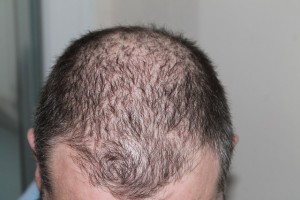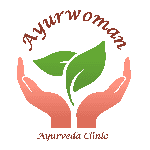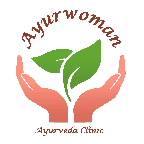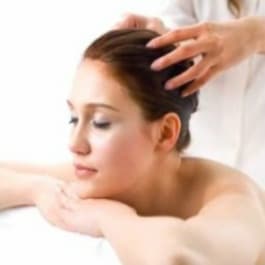Alopecia treatment
Alopecia management has been well documented in classical Ayurveda texts. Alopecia can be managed with Ayurveda. While no treatment regime can promise a guaranteed cure, at Ayurwoman we have got good success stories. Feel free to contact our Ayurveda practitioner to know more about how Ayurveda can manage Alopecia. Read through to know more about alopecia as a disease or to know how ayurveda approaches alopecia.
Hair is as much as part of the body as eyes, ears and skin. Often hair is associated more with beauty and less with health. Health problems related to hair or scalp need to be addressed in time or else may lead to excessive hair loss, pre-mature greying, baldness or even infection.
There are different patterns of hair loss in women and in men. In men there is often a receding hair line which is due to the male hormone testosterone. Women may occasionally experience this pattern, but more usually have either generalised diffused hair loss or alopecia areata.
Alopecia Areata
Alopecia areata involves discrete patches of hair loss. It is common in young adults and this condition often recovers spontaneously. Alopecia areata is thought to be an autoimmune disease in which the body attacks its own hair follicles.
Diffused hair loss is exactly what it says it is. It is a generalised thinning and and is a loss of hair from the top of head. Generalised and mild scalp hair loss can also accompany disease of the scalp such as psoriasis and eczema.
Growth of hair follicle is classified into three phases. Anagen which is the growing phase which lasts for 2-6 yrs. Catogen the phase which lasts for 1-2 weeks and Telogen the resting phase which lasts for 3-4 months.
Hair loss causes
Multiple reasons can be associated with alopecia or hair loss of which major ones are:
- An underactive thyroid gland or any other hormonal disturbance such as PCOS and Diabetes
- Pregnancy
- A fever or any severe illness
- Side effect of drugs or treatment eg: chemotherapy
- Iron deficiency
- Hereditary reasons (alopecia areata is more likely to occur in people with a family history of autoimmune disease)
Alopecia and Ayurveda
Ayurveda uses three terms to describe the symptoms of hair loss which are Indraluptham, Khalithyam and ruhyam. Indraluptham can be correlated to alopecia areata (ring shaped hair loss). Khalithyam is the general hair fall as a long continuous process and Ruhya is a hair loss condition which affects the entire body.
Hair Loss Treatment
 Ayurveda considers each individual a different human being who is a combination of the three basic doshas in varying degrees. Thus a dosha analysis or an ayurvedic body type analysis is important in any ayurvedic alopecia management. No ayurvedic treatment is ever the same for two different individuals even if they have similar indications. While one person may receive panchakarma therapy appropriate to his or her age and seriousness of the complaint, another individual may simply be prescribed appropriate ayurvedic herbal supplements. It is therefore vital that you always consult an ayurvedic practitioner before taking any kind of the ayurvedic therapy.
Ayurveda considers each individual a different human being who is a combination of the three basic doshas in varying degrees. Thus a dosha analysis or an ayurvedic body type analysis is important in any ayurvedic alopecia management. No ayurvedic treatment is ever the same for two different individuals even if they have similar indications. While one person may receive panchakarma therapy appropriate to his or her age and seriousness of the complaint, another individual may simply be prescribed appropriate ayurvedic herbal supplements. It is therefore vital that you always consult an ayurvedic practitioner before taking any kind of the ayurvedic therapy.
Ayurveda believes excessive pitha dosha as the main reason for hair loss. Hair follicles contain Brajaka Pitha which is one among the five types of pitha. When pitha at the root of hair increases and associates itself with vata dosha it results in the falling of hair. Kapha and Raktha then together block the follicle not allowing further fresh hair growth
Ayurvedic Alopecia treatment
Pitha pacification is the primary ayurvedic hair loss treatment via necessary pitha pacification diet and pitha reducing ayurvedic herbs. Iron deficiency if exists also has to be corrected. Food and medicines with bitter and sweet in potency are very beneficial for pacifying pitha dosha.
Ayurvedic medicated hair oil which contains Jasminum grandifolium is highly beneficial for alopecia.
Ayurvedic tonics and powders for liver strengthening and blood purification also provide benefit in this condition.
Ayurvedic rasayana preparations for boosting iron level, increasing the bodily immune function and to nourish body tissues including bone tissues is a well-regarded method in ayurvedic therapy because ayurveda believes hair and nail as the bi-products or extensions of bone tissue formation.
Panchakarma as an alopecia treatment
Panchakarma essentially means five (pancha) remedial measures (karma) in which body is cleansed from an ayurvedic perspective. Panchakarma cleanse is usually seen as complementary to the rest of the therapy for alopecia.
Specific areas of panchakarma suggested are Nasya, Ksheera vasthi (medicated enema particularly for severe pitha imbalance) and shirodhara (ayurvedic head massage).
Ksheeravasthi is a type of vasthi therapy with milk. This is helpful in reducing pitha dosha. Vasthi is a soothing treatment for vata dosha and it also promotes bone tissue formation.
Shirodhara: Your practitioner gently pours a continuous stream of warm medicated oil over forehead for about 30 to 60 minutes. In some other special situations, oil is replaced with medicated herbal liquids. Shirodhara is indicated for baldness, hair loss and greying of hair.
Alopecia and ayurvedic diet
A proper and ayurvedic diet is an essential ingredient in alopecia management. Ayurvedic diet supports ayurvedic medication and treatments for alopecia.
Include or increase
- Food with sweet, bitter and astringent properties
- Leafy green pulses, lentils
- Nuts and seeds: sesame seed, sunflower seed and soaked almond
- Dark grapes, sweet plum, dates, pomegranate and sweet berries
- Egg white, fresh water fish, chicken and turkey
- Artichoke, snake gourd and bitter gourd
- Drink 8-10 cups of boiled and cooled water
- Herbal tea like peppermint and liquorice tea
- Dark grape juice, pomegranate juice, milk, coconut water and cucumber juice
Reduce or avoid
- Tomato, eggplant
- Red meat
- Excessive use of garlic and raw onion
- Chilli, dried ginger powder and barbecue sauces
- Vinegar, fermented sauces
- Sour cream, cream cheese and yoghurt
- Citrus fruits, pineapple, pickled items
- Alcohol, smoking and soft drinks


